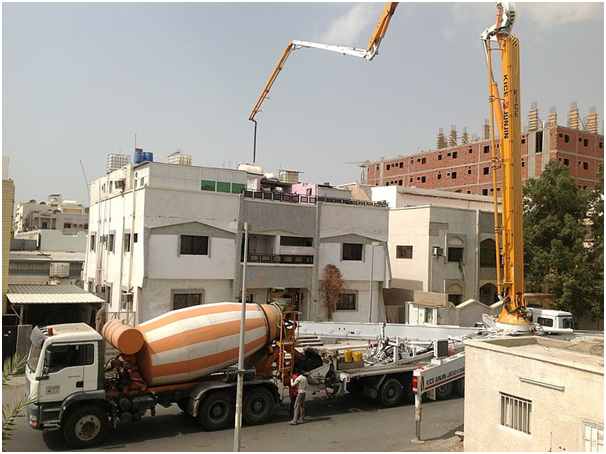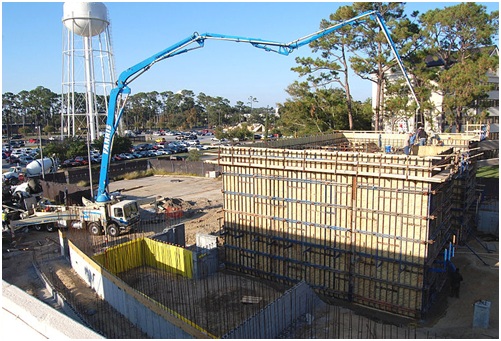In virtually all construction projects, concrete plays a major role and provides stability, durability and strength to the finished structure.

Concrete is the material that gives bridges, office and shop buildings their integrity and ability to withstand years of exposure to the natural elements and constant use. In modern construction sites, concrete pumping is commonly used to move the concrete around the location.
Concrete pumps are commonly used for:
– Residential projects, such as foundations, patios and walls.
– Agricultural projects, such as barns, silos, sheds and bunkers.
– Civil projects, such as water treatment plants, hydro stations and bridges.
– Industrial or commercial projects, such as ice rinks, shopping centres, factories and high-rise buildings.
The benefits of concrete pumps include:
Saves time
Time is paramount on all construction sites. Concrete pumps can save workers a lot of time, making them hugely beneficial. By using concrete pumps, the time to mix and transport concrete is dramatically reduced.

Time is also saved as the crew does not need to clear a path for concrete lorries to access the different locations needed on site.
Improved productivity
A productive construction site and crew has far-reaching benefits. By using concrete pumps, the crew can work on other elements of the project without the need to move the concrete in wheelbarrows or shovel it around the site.
Companies such as http://www.monstermixconcrete.co.uk/concrete-services.php use a concrete pump extending from a lorry to pour concrete to the exact location required. This makes the process very precise and accurate.
There is also less time needed for cleaning up. This accuracy reduces wasted concrete spillages, further improving productivity.
Less labour required
Fewer workers are required on a construction site due to the set-up and application of the concrete pump compared with the more labour-intensive way to use concrete.
Fewer workers reduce labour costs and make the project more lucrative for the firm. As the construction industry continues to face problems due to bad weather and economic issues, this can only be a good thing.
The number of employees required to operate a concrete pump is fewer than the number required to move and mix concrete using traditional methods; in addition, the operation is far safer.
Less heavy lifting is required and there is less chance for mishaps and serious injuries.
